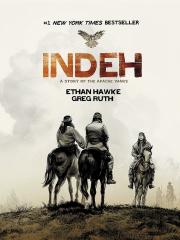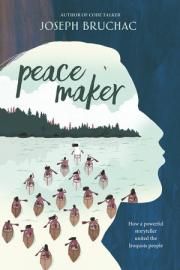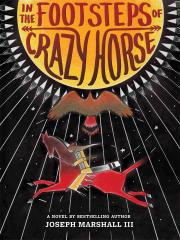Why Native American Heritage Month?
Native American Heritage Month acknowledges and celebrates the contributions of the indigenous and first peoples of the United States, including those who identify as “American Indian” and members of the Native Alaskan population. Native American Heritage Month is also known as Indigenous Heritage Month or National American Indian and Alaska Native Heritage Month (National Congress for American Indians). Terminology has changed in the past few years, and it is important to remember that Native people often have individual preferences on how they would like to be addressed. This month celebrates a multitude of rich and diverse cultures, traditions, and histories while acknowledging the important contributions of Native people.
Scroll to the bottom of the page for downloadable resource lists and resource trackers.
As part of our Read Wider program we have downloadable resource lists and resource trackers.
Downloadable resource lists are full of books, movies, music, and online resources. Each list is carefully curated by our collection librarians to highlight own-voice stories, stories of struggle, and stories of strength.
Resource trackers for kids and teens or adults are a great way to record and highlight your favorite books, movies, music, and online resources for this month. Teens can choose to use the kids and teens or the adult resource tracker.
History of Native American Heritage Month
The fight of Native American leaders to gain recognition of the atrocities of colonization and to acknowledge the vast cultural and industrial advancements made by Native people was an 80 year fight. In 1915, Seneca Indian Dr. Arthur C. Parker proposed that American Indian Day (as it was known at the time) be recognized by the Boy Scouts of America. They agreed to set aside A Day for “First Americans” for three years. Also in 1915, Rev. Sherman Coolidge (Arapahoe) headed a vote amongst the annual Congress of American Indian Association to observe “American Indian Day.” Another key player was Red Fox James (Blackfoot) who famously rode horseback from state to state, seeking approval for a day to honor American Indians (Native American Heritage Month).
This effort from each respective tribe has led to several states recognizing Columbus Day as Native American Day and to the official designation of November as National American Indian Heritage Month in 1990 by President George H.W. Bush (Native American Heritage Month).
Local History
To celebrate this month and to honor those who have suffered the violence of colonization, it is important to first recognize the great nation of Indigenous people that existed on this land before us. Pitkin County, for example, was home to a sub-group of the Ute Native Americans called the Parianuche (Elk People). They lived in present day Glenwood Springs and inhabited the Crystal and Roaring Fork valleys respectively (Colorado Encyclopedia). Their specific tribe differentiated themselves from other Ute tribes by their connection to our river systems (Southern Ute Indian Tribe).
Aspen Indigenous Foundation
Aspen Indigenous Foundation (founded as Aspen Ute Foundation) was started in March 2005 to bring the Indigenous presence back to the Roaring Fork Valley and to help facilitate the reconnection of the Utes to their ancestral lands. To promote the Indigenous culture and rich traditional ways, the Aspen Indigenous Foundation has brought an annual dancing and drumming exhibition downtown Aspen consisting of groups of about 25 tribal members in their full regalia. As a cultural exchange, all participants are given the opportunity to experience skiing/snowboarding or just riding the gondola. Their programs provide a chance for Native Americans to come off the Reservations and experience the healthy and beautiful lifestyle that our mountain town offers to each one of us.
Learn more and find more events hosted by the Aspen Indigenous Foundation.
Indigenous Reads Rising
Indigenous Reads Rising is a resource that provides teachers, librarians, and readers with books published by Native writers and illustrators, reflecting their cultures, Nations, and lived experiences. This resource includes a variety of best practices articles and where to find more books by Native authors and illustrators, as well as extensive book lists organized by age category and topic. They also provide resources for Native writers and illustrators interested in honing their craft and applying for grants and mentorships.
Indigenous Reads Rising is managed by the nonprofit We Need Diverse Books.
























